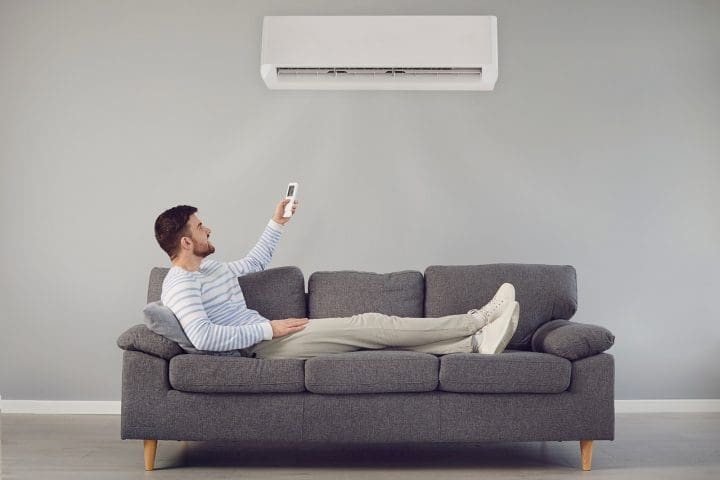Selecting the right air filter for a HVAC system is a critical decision that impacts both indoor air quality and the overall efficiency of the heating, ventilation, and air conditioning setup. HVAC air filters for home are essential in trapping dust, pollen, and other particulates, thus preventing them from circulating through the home. The correct filter size not only ensures that the unit runs efficiently but is also vital for maintaining a healthy environment. An improperly sized filter can lead to air bypass, where unfiltered air circulates back into the room, reducing indoor air quality and potentially aggravating health issues like allergies and respiratory conditions.
It’s important to note that HVAC systems are designed to accommodate filters of specific sizes, and using the wrong size can hinder the system’s performance. To find the correct filter, one must measure the length, width, and depth of the current filter or the filter slot. These measurements are essential for acquiring a filter that fits snugly without any gaps. A well-fitted air filter prevents unfiltered air from passing around its edges, ensuring that all the air that circulates through the system is as clean as possible.
Understanding HVAC Air Filters
Selecting an HVAC air filter requires understanding the types of filters available, the efficiency of each as measured by MERV ratings, and the significance of finding the right size for your system.
Filter Types and Materials
HVAC air filters are commonly made from materials such as spun fiberglass, pleated paper, or cloth, all designed to trap particulates and contaminants. The type of filter material affects its function and efficiency in cleaning the air. When considering filter types, pleated filters are notable for their larger surface area compared to standard fiberglass filters, which increases their ability to capture more particles.
Common filter types include:
- Fiberglass filters: Economical, disposable, and have a lower MERV rating.
- Pleated filters: Made from higher-quality fabric and usually have higher MERV ratings.
- HEPA filters: High-efficiency filters that can remove at least 99.97% of airborne particles.
MERV Ratings Explained
MERV stands for Minimum Efficiency Reporting Value, a standard rating that measures a filter’s ability to capture particles of varying sizes. The MERV rating scale ranges from 1 to 20, with higher numbers indicating finer filtration. Residential filters typically range from MERV 7 to MERV 13, while HEPA filters have ratings of 17 or higher.
MERV Rating Scale:
- MERV 1-6: Captures large particles like dust mites and pollen.
- MERV 7-13: Suitable for residential use, capturing smaller particles like mold spores and pet dander.
- MERV 14-20: Used in specialized environments like hospitals, capturing bacteria and tobacco smoke.
Importance of Air Filter Size
Air filter size is critical to ensure a proper fit and maximum efficiency. Filters that do not fit properly can allow air to bypass the filter entirely, rendering it ineffective. The air filter size is often described by its nominal size, which is the rounded-off measurement used for labeling, and its actual size, the precise measurements of the filter. Knowing both nominal and actual sizes is essential for choosing the right fit for your HVAC system.
Air Filter Size Guide:
| Nominal Size | Actual Size (L x W x H) |
| 16″ x 20″ | 15.5″ x 19.5″ x 0.75″ |
| 16″ x 25″ | 15.5″ x 24.5″ x 0.75″ |
| 20″ x 30″ | 19.5″ x 29.5″ x 1″ |
It’s necessary to measure the dimensions of your current filter or the filter slot to determine the correct size needed. Common sizes include 16″x20″, 20″x30″, and others, but it’s vital to remember that these are nominal sizes and the actual dimensions may be slightly different.
Selecting the Proper Size
Selecting the correct size for an HVAC air filter is crucial to ensuring optimal system performance and air quality. Precise measurements of length, width, and thickness are necessary for a proper fit.
Measuring for the Right Fit
To measure an existing air filter, one must remove it from its slot or compartment. The filter slot, typically located next to the return air vents or within the HVAC system, should be measured for length (top to bottom), width (side to side), and depth (front to back). These measurements are typically recorded in inches. For example, if an air filter measures 20 inches long by 25 inches wide with a thickness of 1 inch, it should be written as 20″ x 25″ x 1″.
- Length: Measure from top to bottom of the filter.
- Width: Measure from side to side of the filter.
- Thickness or Depth: Measure the front-to-back of the filter.
It’s imperative to ensure these dimensions correspond to the available space in the HVAC unit’s filter compartment to avoid system inefficiencies or airflow blockage.
Nominal vs. Actual Size
HVAC filters come in two size categories—nominal and actual size. The nominal size refers to the rounded numbers often indicated on the filter label or the filter’s frame by the manufacturer and is the size by which the filter is commonly identified. For instance, a filter may be labeled with a nominal size of 20″ x 25″ x 1″.
The actual size can differ slightly and represents the exact dimensions of the filter. These measurements might be smaller than the nominal size and are critical when it comes to the precise fit within the filter compartment. A filter’s model may also provide details regarding its actual size, enabling a more seamless replacement. Identifying the correct actual size ensures that the filter performs efficiently and effectively without any gaps or overlaps.
- Nominal Size: The labeled size, is rounded to the nearest whole number.
- Actual Size: The precise measurement, often slightly smaller than the nominal size.
For an accurate replacement, the actual size should be used when selecting a new HVAC filter. If the actual size is unknown, one can consult the documentation provided by the HVAC system manufacturer or measure the existing filter carefully to determine the exact size needed.


Installation and Maintenance
Proper installation and regular maintenance of HVAC filters are crucial for ensuring both optimal filter efficiency and the longevity of residential HVAC systems. Incorrect filter installation can lead to increased energy costs and potential damage to the system.
Replacing Your HVAC Filter
To replace an old filter, one should first ensure the power to the HVAC unit is off to prevent any safety hazards. The next steps include:
- Locating the filter slot on the HVAC unit.
- Carefully remove the old filter, noting the direction of airflow marked by an arrow on the filter’s frame.
- Choosing the correct replacement filter that matches the size required for the specific HVAC unit.
One should measure the length, width, and depth of the old filter or consult the HVAC unit’s manual for size requirements. Common dimensions include length and width, with depth typically being 1 inch. However, the actual filter size might be slightly smaller than these nominal dimensions. For instance, a 16″ x 20″ x 1″ filter may measure 15.75″ x 19.75″ x 0.75″.
- Inserting the new filter into the slot, making sure the arrow for airflow direction on the filter aligns correctly towards the blower.
- Securing any fasteners or latches to keep the filter fit snugly in place, preventing air bypass.
Common Issues with Filter Sizes
A wrong size filter can lead to several problems:
- Gaps around the filter: Allows unfiltered air to circulate through the system, reducing filter efficiency.
- Overly snug fit: Makes filter replacement difficult and can compromise the structural integrity of the filter, potentially leading to damage.
- Incorrect thickness (depth): Can affect the maximum airflow rate, which might result in increased energy consumption and reduced efficiency.
It is crucial that homeowners check the specific size requirements of their HVAC system rather than assuming common sizes fit all. When in doubt, consult with a certified HVAC technician to avoid issues related to improper filter size. Regular maintenance checks are recommended to ensure filters are in good condition and the HVAC system functions effectively.
Air Quality and Health Concerns
Choosing the right HVAC air filter is crucial for maintaining indoor air quality and managing health concerns relating to airborne pollutants. Effective filtration can trap dust particles, pet dander, and other allergens, reducing the risk of allergies and respiratory issues.
Impact of Filters on Indoor Air Quality
HVAC air filters play a vital role in capturing a wide array of airborne contaminants, including dust, pet dander, dust mites, pollen, and bacteria. High filtration efficiency is paramount in restricting the circulation of these contaminants. Furnace filters with higher MERV (Minimum Efficiency Reporting Value) ratings can potentially trap smaller particles and even certain types of viruses, thus significantly enhancing the indoor air quality.
- Common Airborne Contaminants:
- Pollutants
- Dust particles
- Pet dander
- Allergens
- Airborne contaminants
- Bacteria
- Viruses
Benefits of Frequent Filter Replacement
Regularly replacing HVAC air filters can not only maintain optimal air quality but also can prevent the HVAC system from overworking, leading to higher energy efficiency and lower costs. It is advised to replace filters every 90 days to ensure peak system performance. Consistent replacement mitigates the accumulation of dust and allergens, supporting a healthier living environment and helping individuals with allergies or other respiratory conditions.
- Replacement Benefits:
- Improved air quality by reducing pollutants and allergens.
- Enhanced performance and lifespan of HVAC systems.
- Lower energy costs due to improved airflow and system efficiency.
By understanding the direct correlation between air filter selection and replacement frequencies, individuals can ensure that their indoor air remains clean, thus supporting a healthy living space.




